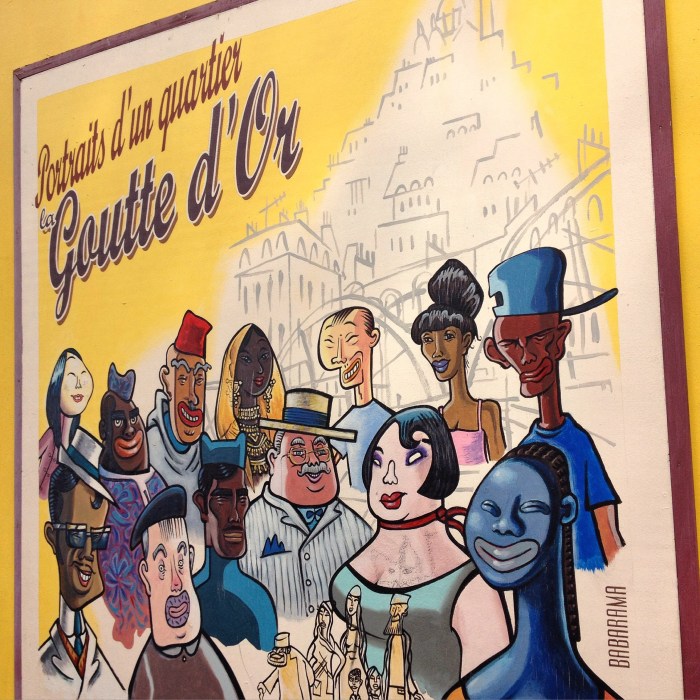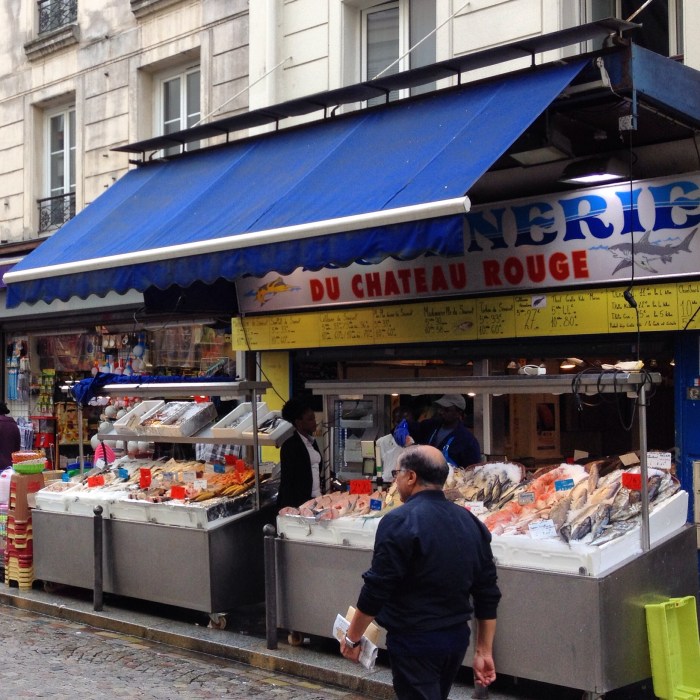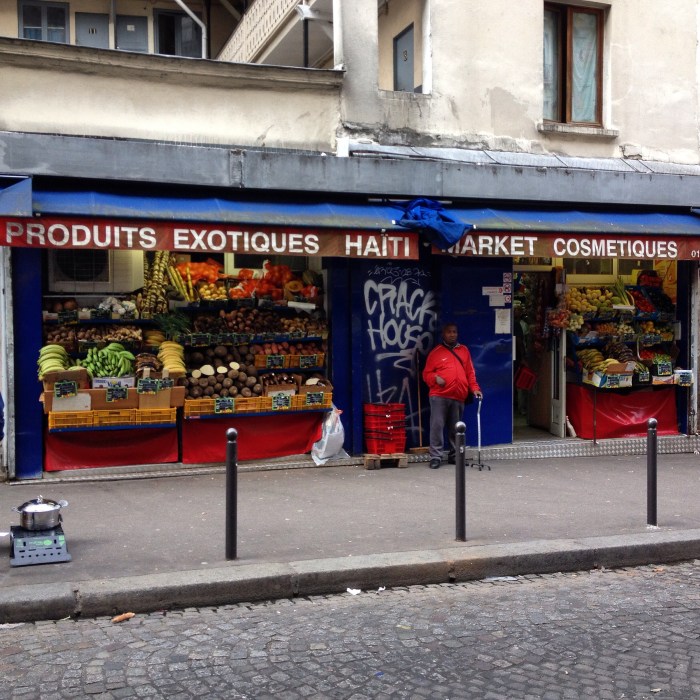La Goutte d’Or is a district in Paris and a raw and vibrant slice of this city. The vast majority of its population is made up of people from the former French colonies most notably North African countries such as Morocco and Algeria and West and Central African countries such as Senegal, Mali, Burkina Faso and the Congo.
This is a very interesting part of the city to explore, especially if you’ve already experienced many of Paris’s more obvious highlights such as the Eifel Tower, the Louvre, the Champs Élysées etc.
For bearings one could carve up the district as being the triangle with its points the metro stations Barbés Rochechouart, La Chapelle and Château Rouge.
The Rue Goutte d’Or has a couple of good and traditional North African restaurants to eat at. I particularly recommend an establishment called Agad’Or, which serves a substantial portion of Couscous Maison (daily homemade couscous with a soupy vegetable stew with chicken or meat and a medium baguette) for only six euros. Opposite Agad’Or there’s a cheap little boulangerie/patisserie where you can pick up a generous pan au raisin for only a euro. The Rue Goutte d’Or is in many ways the heart of the North African community. The first wave of North Africans arrived at the beginning of the 20th century and a more substantial wave of North African immigrants arrived here in the 1950s (during this time countries such as Morocco and Algeria were French colonies) mainly to work in the automobile industry.
Turning left up ascending Rue Polonceau, on your right there is a hole in the wall Congolese restaurant. I know almost next to nothing about the DRC or the traditional cuisine from that part of the world. Yet I was curious and intrigued. Maybe another time I’ll take a punt on it.
A little further up Rue Polonceau on your right is Rue St Luc which will take you towards the large church St Bernard de la Chapelle. On 23rd August 1996, the church hit international headlines when around 300 undocumented immigrants who had taken refuge at the church (including a few who went on hunger strikes) over a long period of time were expelled by force by the police.
On the corner of Rue St Luc and Rue Cavé, I stumble across a corner art gallery/work space which is currently showing a small but intresting exhibition on the history of public graffiti art in the streets of Paris beginning with the legendary early 1980s French graffiti artist Blek Le Rat who became an enormous influence on later more well known graffiti artists such as Banksy.
On Rue Cavé, there is a lovely lush garden representing an oasis of Eden like tranquility and blissfulness amongst the gritty streets. The street was named after François Cavé, who was a significant figure during France’s industrial development in the 19th century. What’s more, he provided bread to many of the residents of La Goutte d’Or.
If Rue Le Goutte d’Or is the heart of muslim North Africa, Rue Myrha is christian Sub Saharan Africa. Here I spot a small Senegalese hole in the wall eatery called Touba Resto which serves traditional Senegalese dishes daily such as maffe (a delicious peanut based stew), yassa and thieboudienne (the national dish of Senegal consisting of fish, rice and tomato sauce). At no46 Rue Myrha is a small ramshackle shop called Binta which sells herbs, barks and an array of intriguing traditional artisan products from Mali. It is packed to the gills with stuff and I can barely motion my way around especially with my cumbersome rucksack. There are many shops like this including quite a few informal fabric and clothes shops were one can see people sewing and making traditional garments. There is a also a world music shop called Pala Pala Music but unfortunately it was closed.
Walking onto the Rue des Poisonniers and the junction with Rue Dejean is the Marché Dejean with fruit and vegetable traders, fish mongers etc. It is a hive of activity. Around here I also see shops and people from other parts of the French speaking world such as Caribbean countries like Haiti and Guadalupe. This is the area around Chateau Rouge metro station. I find this part of Paris really alive and a great place to just watch life go by. I love the history and the infamous cafés of St Germain and the Left Bank (which I’ll be touching upon in another post) yet here is real life warts and all.
Text and images by Nicholas Peart
28th September 2016
(All rights reserved)

On the Rue La Goutte d’Or

The Moroccan restaurant Agad’Or

Couscous Maison at La Goutte d’Or

Another North African restaurant also located on Rue La Goutte d’Or

Halal butchers on Rue La Goutte d’Or

Hole in the wall Congolese restaurant on Rue Polonceau

St Bernard de la Chapelle church which police stormed in August 1996 to forcibly remove many undocumented immigrants who for a long time had taken refuge at the church


A beautiful garden oasis on the Rue Cavé.

A Senegalese restaurant on Rue Myrha

Pala Pala world music shop


This shop sells traditional herbs, bark and crafts from Mali



On Rue Dejean in Château Rouge

Château Rouge

Château Rouge

Château Rouge


Haitian shop in Château Rouge

Senegalese and Togo restaurant